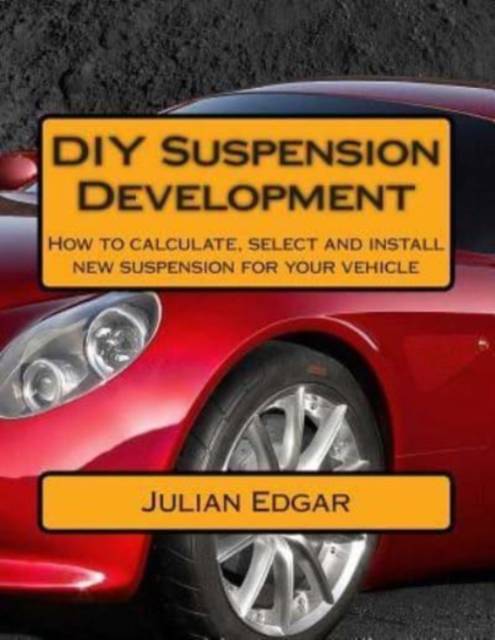
- Afhalen na 1 uur in een winkel met voorraad
- Gratis thuislevering in België vanaf € 30
- Ruim aanbod met 7 miljoen producten
- Afhalen na 1 uur in een winkel met voorraad
- Gratis thuislevering in België vanaf € 30
- Ruim aanbod met 7 miljoen producten
Zoeken
Omschrijving
This unique book takes a completely different approach to do-it-yourself suspension development. It starts with theory - the natural frequencies of sprung masses, the relationship between static deflection and natural frequency, and how you can use your smart phone to directly measure bounce, pitch and roll frequencies of your car's suspension. Also covered are real and virtual swing-arms, roll centres, and the relationship between roll centre, centre of gravity and body roll. Damping - its function and the two fundamental types - also gets a look-in. All explanations are made using real (rather than theoretical) examples.And the vehicles also aren't confined to just conventional cars. Ultra-light-weight machines - of the sort powered by human legs or a small electric motor - are among the hardest of all machines on which to set up effective suspension. After the theory, it's time for the practice. Three major case studies are used. The first case study involves designing and building from scratch the air suspension system for an ultra-light-weight 3-wheel vehicle... in fact, a vehicle that in total weighed under 20kg. The design decisions were about having sufficient suspension travel, achieving zero bump steer, and having effective roll stiffness.... all with very low weight.Then covered is a front wheel drive car, with special emphasis on the design selection of new springs that provided the correct front/rear stiffness and ride height change. Next is a traditional rear-wheel drive car. In this case, the decision was made to use one company's complete suspension kit for this model - new springs, dampers, anti-roll bars, and revised rear axle location. Step-by-step pictures show the complete fitting sequence.Finally, one-off suspension changes are covered - adding a front camber kit, fitting a rear anti-roll bar on a front-wheel drive, and - more complexly - altering the front/rear torque split in an electronically-controlled all-wheel drive car.Whether you're just starting an interest in suspension, or would like to better understand the theory, this book is a must-have for every car enthusiast.
Specificaties
Betrokkenen
- Auteur(s):
- Uitgeverij:
Inhoud
- Aantal bladzijden:
- 120
- Taal:
- Engels
Eigenschappen
- Productcode (EAN):
- 9781507637340
- Verschijningsdatum:
- 20/01/2015
- Uitvoering:
- Paperback
- Formaat:
- Trade paperback (VS)
- Afmetingen:
- 216 mm x 279 mm
- Gewicht:
- 294 g

Alleen bij Standaard Boekhandel
+ 76 punten op je klantenkaart van Standaard Boekhandel
Beoordelingen
We publiceren alleen reviews die voldoen aan de voorwaarden voor reviews. Bekijk onze voorwaarden voor reviews.











